Monstera Rhaphidophora Pertusa
Original price was: ₹550.00.₹75.00Current price is: ₹75.00.
14 in stock
Selling size: Single plant | 2.5″-4″ Pot Included
Monstera Rhaphidophora Pertusa is a stout perennial climber, with stem cylindrical, thick, fleshy. Leaves are broadly ovate, pinnately cut or rarely entire, sometimes perforated with large holes, tip pointed, base rounded; leaf-stalk long, channelled.Pertusa develops into a giant elongated leaf when they’re mature with thicker stems.

Caring for a Rhaphidophora pertusa involves understanding its tropical origins and mimicking its natural habitat. Here’s a breakdown of key care requirements:
Monstera Rhaphidophora Pertusa – Key Care Points:
The Rhaphidophora pertusa, often confused with or sold as a Monstera, is a captivating aroid prized for its deeply fenestrated leaves. While it shares the dramatic, split-leaf appearance of its Monstera cousins, it boasts its own unique charm and growth habits. Understanding its specific care requirements is crucial for ensuring its health and vibrancy.
Light:
Monstera Rhaphidophora Pertusa thrives in bright, indirect light. Direct sunlight, especially during the hottest parts of the day, can scorch its delicate leaves. A location near an east- or north-facing window is ideal. If you’re using a south- or west-facing window, be sure to filter the sunlight with sheer curtains or blinds. Insufficient light will result in leggy growth, smaller leaves, and reduced fenestrations. The plant will also grow slower in low light conditions. The plant will benefit from supplemental grow lights, especially during the winter months, when natural light is limited.
Watering:
Proper watering is crucial for the health of your Rhaphidophora pertusa. The goal is to keep the soil consistently moist but not soggy. Overwatering can lead to root rot, a common problem with aroids. Allow the top inch or two of soil to dry out before watering thoroughly. When you water, ensure the water drains freely from the pot’s drainage holes. Check the soil moisture regularly, especially during hot, dry periods. The frequency of watering will vary depending on factors such as temperature, humidity, and pot size. Generally, you’ll need to water more frequently during the warmer months and less often during the cooler months.
Humidity:
Monstera Rhaphidophora Pertusa appreciates high humidity, mimicking its natural tropical environment. Aim for humidity levels of 60% or higher. You can increase humidity by:
- Using a humidifier: This is the most effective way to maintain consistent humidity levels.
- Placing the plant on a pebble tray: Fill a tray with pebbles and water, ensuring the pot sits above the waterline. As the water evaporates, it will increase the humidity around the plant.
- Grouping plants together: Plants naturally release moisture through transpiration, creating a more humid microclimate.
Misting: While misting can provide a temporary boost in humidity, it’s not a long-term solution. Excessive misting can also lead to fungal problems.
Soil:
A well-draining, airy soil mix is essential for Monstera Rhaphidophora Pertusa. A blend of potting soil, perlite, and orchid bark is ideal. This combination provides good aeration and drainage, preventing waterlogging. You can also add coco coir or peat moss to improve moisture retention. Make sure the pot that you select has good drainage holes.
Fertilizing:
Feed your Monstera Rhaphidophora Pertusa with a balanced liquid fertilizer diluted to half strength every two to four weeks during the growing season (spring and summer). Avoid fertilizing during the dormant season (fall and winter). Overfertilizing can lead to salt buildup in the soil, which can damage the roots.
Repotting:
Repot your Monstera Rhaphidophora Pertusa every one to two years, or when it becomes root-bound. Choose a pot that is slightly larger than the current one. Use fresh potting mix and gently loosen the roots before placing the plant in the new pot. Repotting is best done during the spring or early summer.
Support:
As Monstera Rhaphidophora Pertusa matures, it will benefit from support, such as a moss pole or trellis. This will encourage vertical growth and allow the plant to develop larger, more dramatic leaves. The aerial roots will attach to the support, providing stability.
Propagation:
Monstera Rhaphidophora Pertusa can be easily propagated by stem cuttings. Take a cutting with at least one node and several leaves. Place the cutting in water or moist sphagnum moss until roots develop. Once the roots are a few inches long, you can pot the cutting in soil.
Pest and Disease:
Rhaphidophora pertusa is relatively resistant to pests and diseases. However, it can be susceptible to spider mites, mealybugs, and scale insects. Inspect your plant regularly for signs of infestation and treat any problems promptly. Root rot is the most common disease, and it is caused by overwatering.
Toxicity:
Rhaphidophora pertusa is toxic to pets and humans if ingested. Keep it out of reach of children and animals.
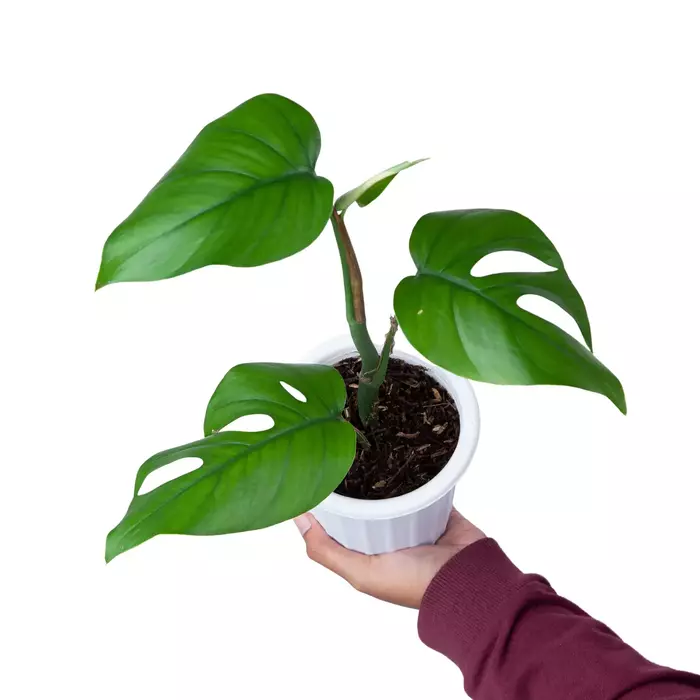
Key Differences from Monstera:
While often mistaken for Monstera, Rhaphidophora pertusa has distinct characteristics:
- Smaller leaves: Its leaves are generally smaller than those of most Monstera species.
- Faster growth: It tends to grow more quickly than many Monsteras.
- Leaf texture: The leaves of Rhaphidophora pertusa are typically thinner and more delicate.
- The Rhaphidophora pertusa is a vining plant, and will grow more readily up a support, than the Monstera Deliciosa, that has a more spreading habit, until it is quite mature.
By providing the proper care, you can enjoy the beauty and elegance of Monstera Rhaphidophora Pertusa for years to come.
Only logged in customers who have purchased this product may leave a review.

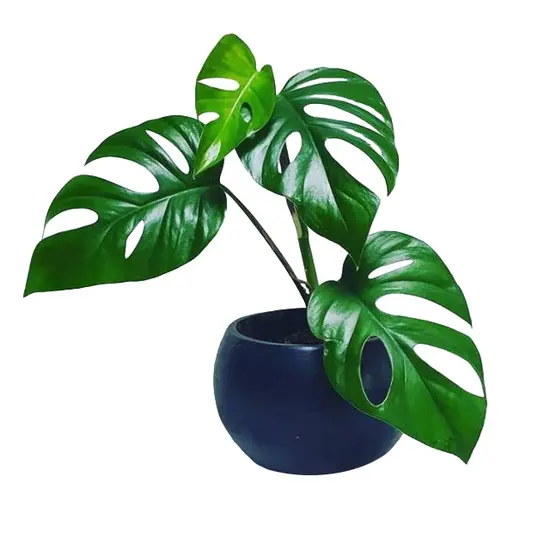
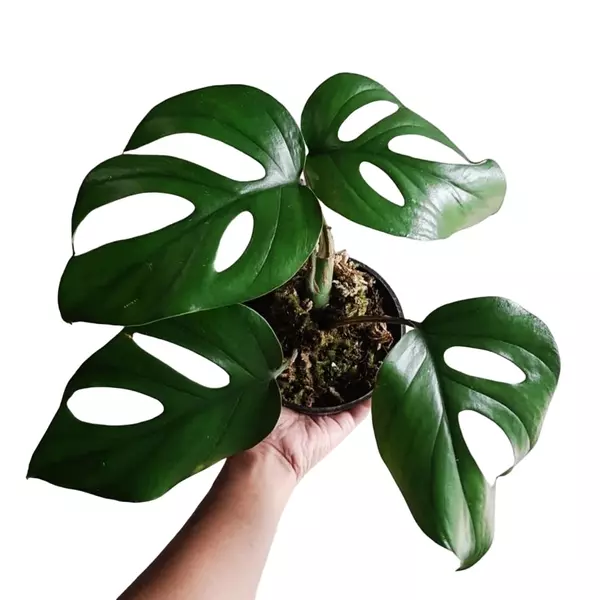

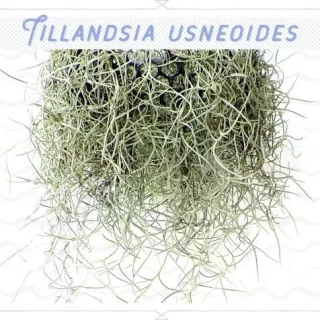
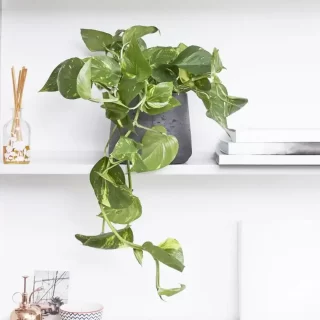



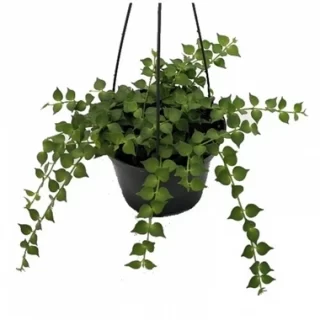
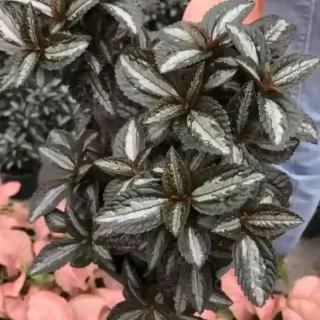
 If you need any assistance, I'm always here. Have you found what you were looking for?
If you need any assistance, I'm always here. Have you found what you were looking for?
Reviews
There are no reviews yet.